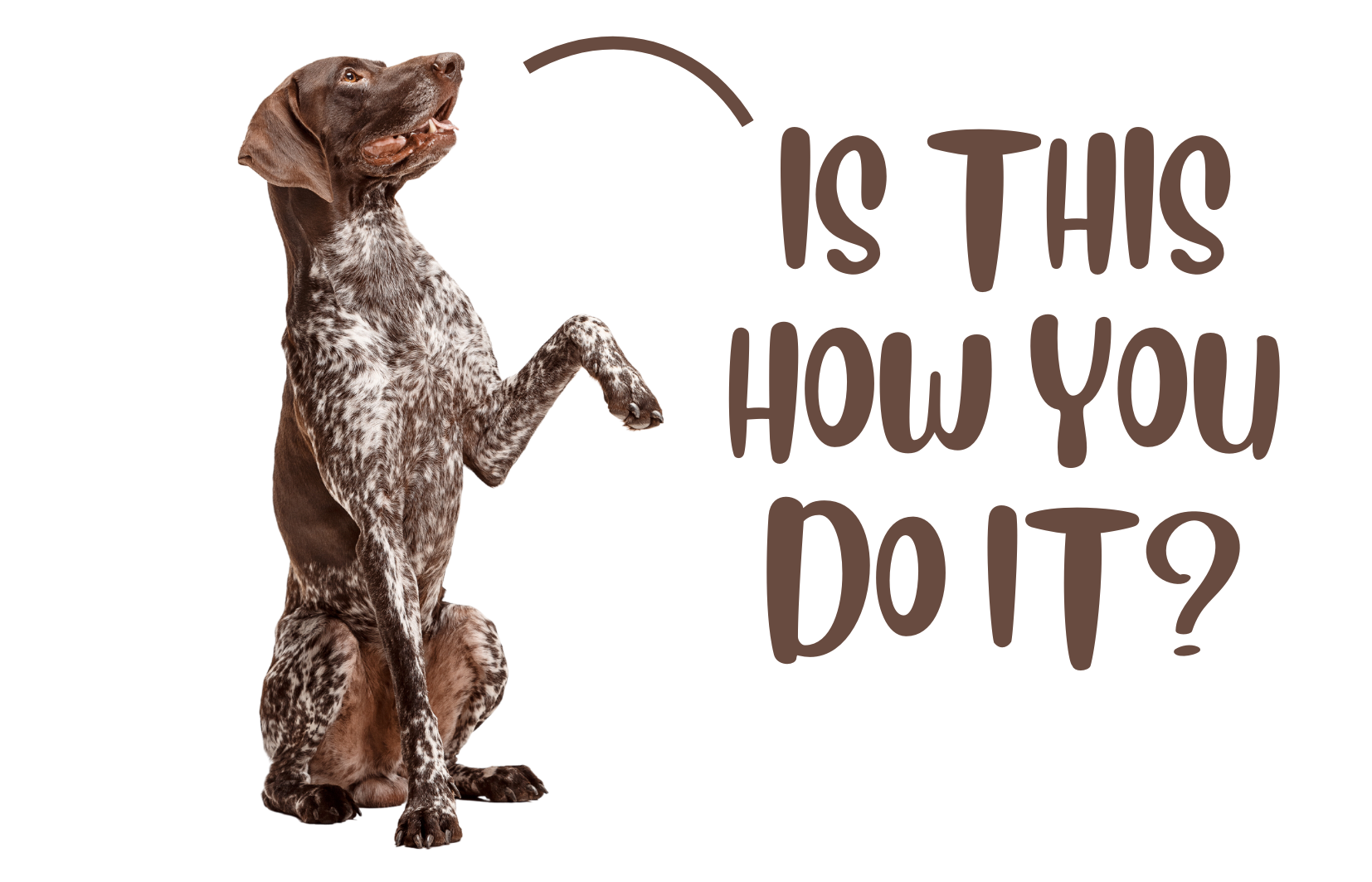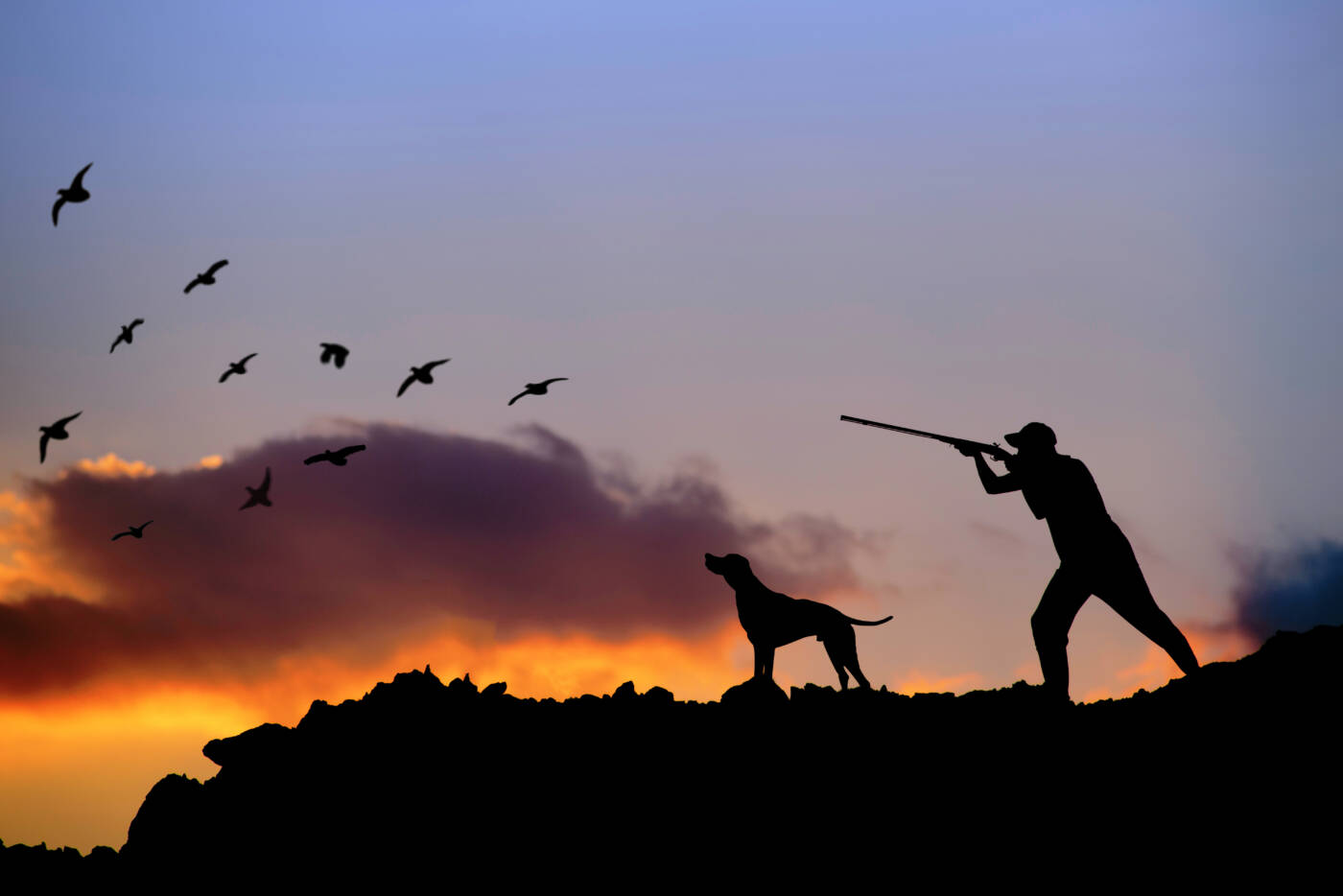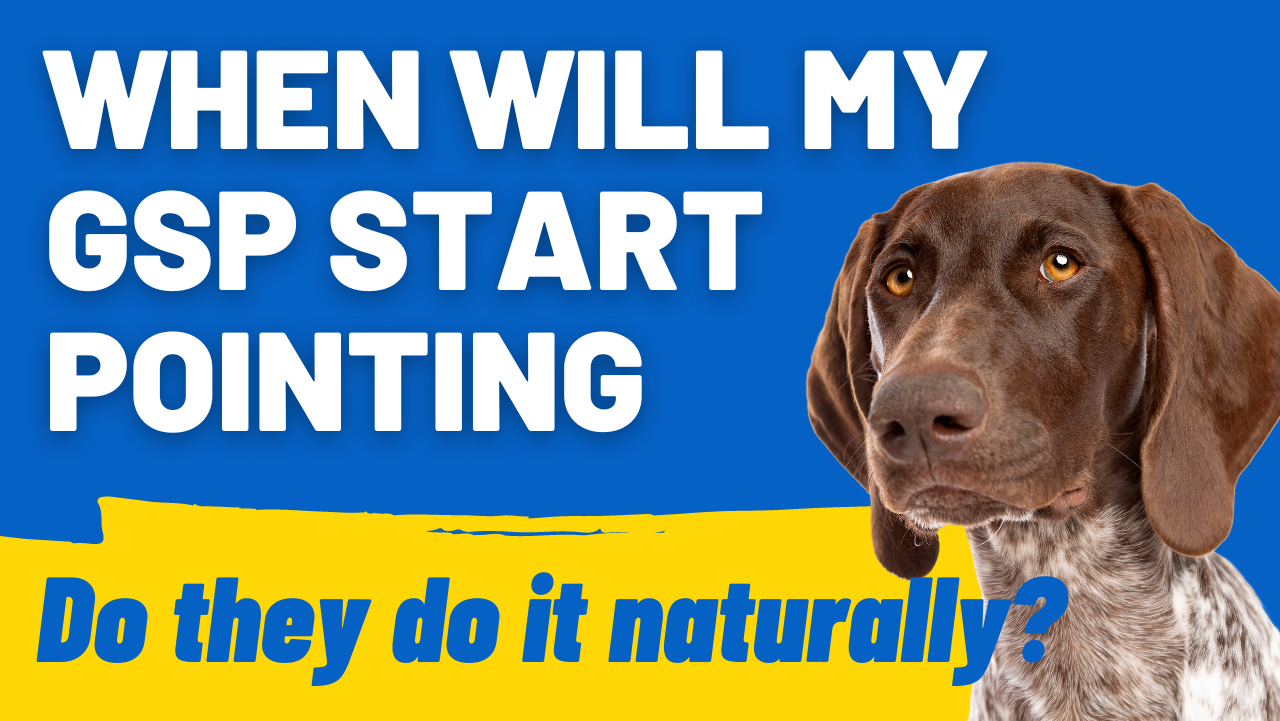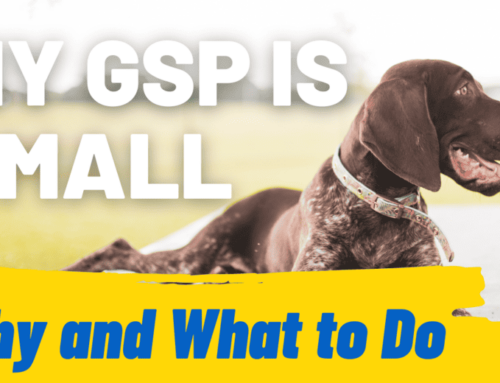GSPs may start pointing as early as two months old. However, most puppies start pointing around 4–5 months old. Soon after, the training begins. In this post we will briefly talk about pointing behavior, and how and when should you start training to make your GSP a fantastic hunting companion.

Do GSPs Point Naturally?
The short answer is yes. German Shorthaired Pointers will start pointing naturally since they belong to the pointer breeds, which have the instinct naturally in their genes.
These highly energetic dogs are bred specifically to aid hunters find game. If left on their own, they will both point and sometimes find their own entertainment as well by hunting prey. If untrained, their energy and excitement will get in the way of your hunting game.
That’s why training at a young age is necessary to tame that pointing and utilize it as best as possible throughout the dog’s lifespan.
When Will My GSP Start Pointing?
Some pups start pointing as young as two months. However, the training should begin around six months old when the puppy is bigger, stronger, and more aware of its surroundings.
Some owners prefer to wait until the eight-month mark when the puppy’s senses are sharper and more responsive to training.
Both approaches are fine, as some pups can respond earlier or later than others. In the following section, we’ll explain how to “test” how ready your puppy is to find game and start training accordingly.
How to Train My GSP to Point?
Your puppy has reached the 6–8 month mark, and now it’s time to start training. Here is what you need to do:
1. Introduce Your GSP Puppy to Birds
Many trainers prefer to begin with the “whoa” command. While that isn’t wrong, gauging your puppy’s reaction to birds first is more important.
So, put a check cord on your puppy and take him to where birds could be. Ideally, you’d want a “positive” reaction from him.
Positive reactions include initial curiosity followed by excitement. Some puppies will chase the bird and try to flush it or catch it. In a few cases, puppies will naturally point too.
Don’t worry if your puppy chases after the bird. While that’s not the reaction you’d want in the long run, it currently means that your puppy has a positive response to birds. Just make sure to hold him with the check cord to prevent him from running away.
2. Teach the “Whoa” Command
Now that your puppy has seen birds and shown interest, it’s time to teach him some discipline to prevent him from running and flushing out your hardly-found game.
The “whoa” command is what you should say when you want your dog to freeze in place without sitting down. The optimum goal is how your dog stands still whenever you say “whoa” regardless of any distractions around him.
To reach that goal, you have two approaches:
The Conventional Lead Method
Use a relatively long lead on your dog; 10 feet would be suitable. Tie it around his neck, and then make a loop with the lead under the dog to prevent him from sitting down when he hears the command.
Now start walking around with your dog, and practice saying “whoa” and then standing still. If your dog moves, gently restrict your dog’s movement using the collar and the loop around his belly.
Keep repeating this maneuver, and your dog will eventually get it.
The E-collar Method
The E-collar is a device that can give a small, harmless shock to your dog to discourage him from moving after the “whoa” command.
Use the same technique as the lead method; say “whoa” and stand still. If your dog moves, deliver a minor shock to discourage him from doing that.
It’s essential to be gentle and refrain from getting angry to avoid making your dog nervous. You should also be aware that dogs who get quickly used to the “whoa” command are the exception, not the norm.
Give your dog a few days and up to a couple of weeks to master the command. The reason why it may take some time is the attention span.
GSPs are highly energetic, easily distracted, and have a short attention span. Accordingly, you should limit the daily training sessions to 15–20 minutes at max.
3. Introduce Some Distractions
Once your dog responds favorably to the command, it’s time to try again while having some distractions around.
The first distraction is you. Start rotating around your dog or moving a few feet away from him, and guide him back to the still position if he moves.
Then gradually start introducing bigger distractions like throwing sticks, balls, and frisbees, and ending with the big boss, exposing your dog to prey.
Gradually discipline your dog each time he moves until he can hold still while having a bird in sight. Each time he’s obedient, tell him how much of a good dog he is, and reward him with occasional treats.
4. Teach the Release Command
You’ve taught your GSP to hold still, now you should teach him how to release. The release command should be taught from a position your dog already knows, and the command could be anything, like let’s go, come on, or even your dog’s name.
Teaching the release command is much easier than the “whoa,” as your dog must have already heard it multiple times at this point.
5. Get Your GSP Used to Gun Sounds

If a person isn’t used to loud noises, the sound of a gunshot can startle them, and your GSP won’t be any different.
To overcome that, you should gradually introduce the noises to your dog as he points. You can start by clapping your hands together when your dog is focused on a bird, then progress to louder noises like a pop gun, then a 22-rifle, then a 410 shotgun, then 12-gauge shotgun…etc.
When you get to the 22-rifle, direct your first shot to the ground as it’s fairly lower. If your dog remains unstartled, take the following shot in the air.
The Bottom Line
German Shorthaired Pointers may start pointing as early as two months old, but the behavior is often seen around five months of age.
Around the six month mark is when you should start training them. Start by exposing them to birds, then teaching them the “whoa” command, followed by the release command.
Finalize by getting them used to gun sounds, and they should be ready to accompany you in your hunting journeys.




